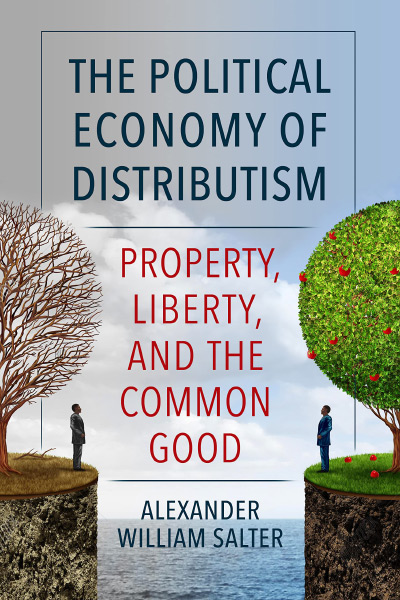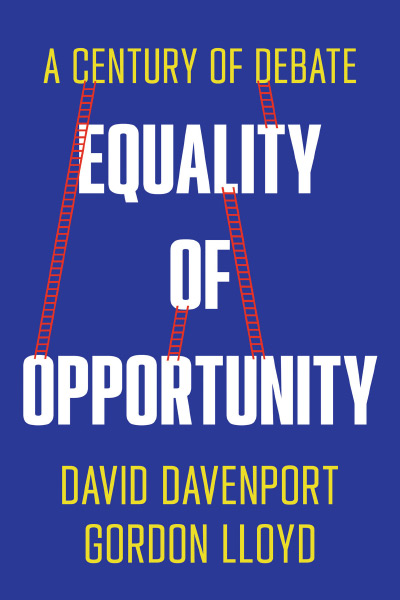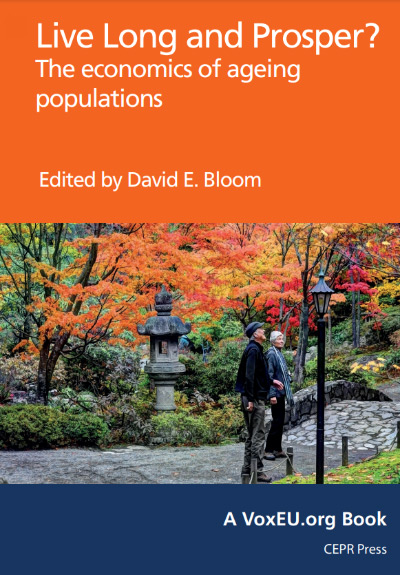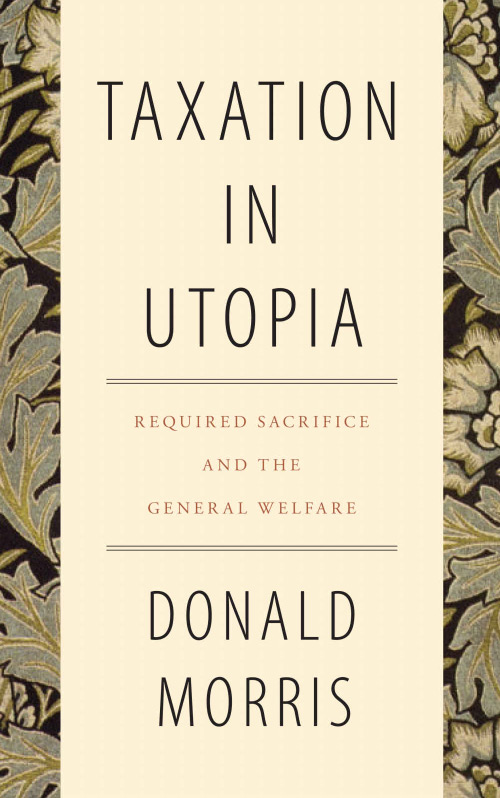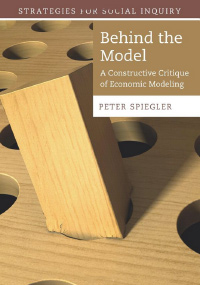The United States has spent $23 trillion on poverty alleviation programs since President Lyndon Johnson declared a War on Poverty in the 1960s. Despite this spending leading to some decline in poverty, the official poverty rate has remained stubbornly high, particularly among minority groups and single women. Because of this tepid success, policy wonks, activists, and politicians continue to debate the best way to reduce current poverty levels and eliminate future poverty. It is in this space where Michael D. Tanner offers his vision of how an inclusive economy is the best way forward.
Tanner’s book is a serious attempt to marry free market economics with social justice concerns. He argues that long-term poverty is structural and that race, gender, and class disparities are the fundamental causes of poverty in America historically and today. However, his solution is not more government intervention in spending or redistribution. Instead, he argues that government regulation has trapped millions in poverty and prevented the economy from becoming more inclusive. An inclusive economy, one that allows individuals to “be self-sufficient and fully in control of their lives” (p. 227) and allows “organic, internal change” (p. 124) is the most promising environment for permanent poverty reduction.
After a brief historical view of poverty policy, Tanner presents two modern poverty perspectives. The first he calls cultural, which he assigns to conservatives. This view “combines an assignment of responsibility to personal choices and decisions by the poor with a broader critique of a ‘culture of poverty’” (p. 39). Conservatives frequently speak of the “success sequence” (high school graduation, marriage before children, and work) as the way out of poverty. Tanner names the second modern view on poverty structural, and he places this view within the domain of progressives. This perspective argues that people are in poverty because of “disparities in political and economic power” (p. 67). The standard progressive solution is increased government spending.
After presenting both views and before presenting his policy reforms, Tanner includes a hinge chapter detailing why redistribution of wealth is ultimately unsuccessful as a poverty tool. Redistribution is unsuccessful because it is a top-down approach that “strip[s] the poor of agency” (p. 124). Even if redistribution provided enough for individuals to be materially taken care of, such an approach would fail to enable people to flourish by providing for themselves.
The last section of the book details five broad areas of reform (each a chapter long) for making the economy more inclusive to help the poor: reforming the criminal justice system, supporting more parental control and flexible school options for primary and secondary education, eliminating or reducing zoning restrictions and property taxes, removing barriers to savings for the poor, and the catch-all proposal of reducing taxes and regulation.
For each of these broad categories, Tanner suggests multiple specific policy changes. Reforming the criminal justice system includes legalizing drugs and prostitution, reducing bail requirements for non-violent offenders, limiting prosecutorial discretion, and supporting laws that limit the use of criminal histories in hiring decisions. For education, Tanner supports expanding vouchers and education tax credits as well as more charter schools, ending teacher certification requirements, and making it easier to fire bad teachers and reward good ones. To lower housing costs, Tanner calls for the end to rent control, the curtailing of zoning laws, and reducing property taxes. To increase savings among the poor, the government should eliminate banking regulations like “know your customer laws,” provide partial individual accounts for Social Security, and enact a single tax-preferred savings account option. Finally, policymakers should stop raising the minimum wage and remove occupational license requirements so it is easier to people to find employment and start new businesses.
Despite the book’s admirable goal of eliminating poverty by making the economy more accessible to all, the book suffers from three weaknesses. First, and most concerning, is the artificial divide Tanner creates in discussing what causes poverty. Second, he does not address the incentive compatibility problem of instituting his reforms. Lastly, the most minor but possibly the most frustrating because of how well the book is sourced (75 pages of endnotes) and how many viewpoints and academic disciplines he uses, at times Tanner is uneven with his use of sources and reasoning.
The first flaw is his framing of the causes of poverty. There are two problems with his framing. First, he assigns the cultural view of poverty to conservatives and the structural view to progressives and rather than supporting these assignments, he merely asserts them to be true. In one glaring passage Tanner ultimately creates a strawman argument for the “conservative” viewpoint. He writes “Conservative critiques of welfare that emphasize behavior and culture ignore the fact choices take place within a complex web of influences: cultural, familial, and psychological, as well as incentive structures and interactions with other people” (pp. 64–65). A statement this strong should be supported by evidence, however, he provides little if any. To bolster his claim, he writes that Charles Murray was the foundation for the modern conservative position on poverty. Murray is a libertarian and only an uncharitable view of Murray’s book Coming Apart: The State of White America, 1960–2010 (New York: Crown Forum Publishing, 2012) would describe the book as only a call for the poor to “pull themselves up by the bootstraps.” Murray considers both cultural and structural reasons for poverty in the book. It’s also odd how Tanner writes that libertarians “believe in the inherent dignity and equality of every human being” (p. 13) while not giving this same belief to conservatives or progressives. Certainly, this would come as a surprise to both.
The second problem is he paints the two theories of poverty as mutually exclusive, which they are not. One person could be in poverty because of structural issues while another is in poverty because of poor life choices, while a third person is in poverty for both reasons. This artificial divide is problematic when one considers that he writes at length about how structural racism has caused and is still causing poverty today for African Americans, while ignoring the fact that three times more whites are in poverty than African Americans, even if a higher percentage of African Americans are in poverty than whites. Even if structural racism is the reason for poverty among African Americans, and the case Tanner presents is strong, the same reasoning cannot be used for poverty among whites. Tanner ignores this.
The divide is even more confusing when Tanner acknowledges that divorce and the breakdown of marriage (including a rise in cohabitation instead of marriage) put women in more danger of falling into poverty than men, particularly when children are present. However, is this a structural problem or a behavior problem? On page 95 he argues that since child bearing is something only women can do, and that societal norms encourage women to be the primary caretaker, the problem is structural. However, when discussing the paucity of marriageable men in impoverished areas, he makes what seem to be behavioral arguments when writing of the decisions by women to have sex and the decisions by men to remain non-committal in relationships.
Tanner again blurs the line between behavioral and structural regarding economic dislocation caused by globalization and automation and their link to poverty. He acknowledges economic dislocation will cause some to fall into poverty as economic opportunities dissipate, which is a structural argument. However, writing “it is easy to say in abstract that the displaced factory worker should settle for the lower-wage, lower-prestige job at a fast-food restaurant, but actually doing so is too humiliating for many” (p. 97) is a behavioral argument. One can acknowledge that the initial cause of poverty for such a displaced worker is structural and out of the worker’s control and recognize that choosing not to work and staying in poverty is a behavioral response.
Given the number of policy recommendations Tanner suggests, it is unfortunate that he does not discuss at any length the difficulty of enacting these policies. At least since Roger Myerson (“Incentive Compatibility and the Bargaining Problem,” Econometrica 47 [January 1979]: 61–74), economists have recognized the difficulty of changing policy when policymakers do not have adequate information about individual preferences let alone the difficulty of enacting change when one party will suffer loss. Take for example his education reforms. Even if expanding charter schools and educational tax credits benefits students, union teachers will suffer harm. That may be a beneficial trade-off, but Tanner does not spend time any time explaining how to implement these policies against a well-organized and motivated opposition. In other cases, he misses reforms that would benefit all sides. For example, while Tanner forcefully calls for criminal justice reform, which he argues would help the poor, he does not call for more policing even though evidence suggests cities are significantly underpoliced (see, for instance, Aaron Chalfin and Justin McCrary, “Are U.S. Cities Underpoliced? Theory and Evidence,” Review of Economics and Statistics 100 [March 2018]: 167–86).
Additionally, Tanner’s uneven care with some sources and consistency in argument is unsatisfying. Consider a few examples. In his sections on rent control and the “second shift” of housework for women in the workforce Tanner uses studies from 28 and 30 years ago, respectively. As more recent research exists on these questions, it is reasonable for the reader to ask what may have changed since, particularly because the claims are empirical. When discussing the segregation effect of moving poor people from poor neighborhoods to wealthier neighborhoods, he uses studies from 1997 and 2013 to question cast doubt on a 2016 study. The way the text reads, the reader is led to believe the earlier studies are responses to the 2016 study, not precursors. Unfortunately, the reader would need to meticulously check the endnotes to discover this. Finally, Tanner argues that people with “substantial assets but low income should not be eligible for welfare benefits” (p. 190) and then approvingly cites a study suggesting the elimination of asset tests two pages later as well as advocating for the elimination of asset tests on page 125. The reader is left to wonder whether policymakers should have assets tests for welfare assistance.
Ultimately, despite being thorough and at times provoking (one does not have to agree with his two camps of what causes poverty to appreciate the chapters), the book is disappointing. Tanner’s policy prescriptions are mostly boilerplate and it is often unclear how his proposed reforms merge free market policies with social justice concerns any better than some conservative or progressive policies. Also, simplifying conservative solutions to the “pull yourself up by the bootstraps” variety and progressive solutions as only spending more money is unsatisfying. It is unlikely that researchers or policymakers will find the book useful their quest to further understand poverty or craft solutions. However, its use in an undergraduate classroom or reading group should create a worthwhile discussion, giving the book some value.




